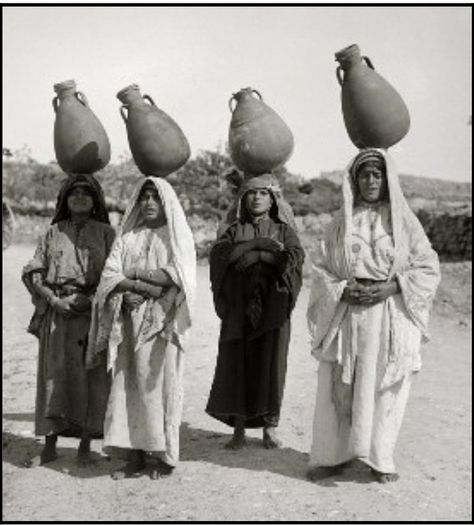The intricate fabric of ancient life in Israel during the time of Jesus is woven with threads of culture, religion, and tradition, manifesting prominently through clothing. The attire worn by individuals during this epoch serves not merely as a means of protection and modesty but also as a reflection of one’s socio-economic status, ethnic identity, and adherence to societal norms. Understanding these garments involves an exploration of the materials used, the concepts of modesty, and the broader cultural relativism that influenced dress during this transformative period in human history.
1. Historical Context and Social Hierarchy
The period known as Second Temple Judaism spans from 516 BCE to 70 CE, offering vital context for understanding attire. The socio-cultural milieu of Ancient Israel was predominantly agrarian, creating a societal stratification that was distinctly reflected in clothing. Ordinary citizens, often engaged in farming and labor, wore simpler garments crafted from readily available materials. In contrast, the elite, including priests and landowners, sported more luxurious fabrics, adorned with intricate design and ornamentation, indicating their higher social status.
2. Material Composition of Clothing
Textiles in ancient Israel were predominantly composed of wool, linen, and, to a lesser extent, cotton and silk. Wool, derived from sheep, was favored due to its warmth and durability, making it suitable for various climates. Linen, harvested from flax, was cherished especially during the hotter months due to its breathable quality. These fabrics were often dyed using natural pigments, yielding an array of colors that reflected both personal preferences and social standing.
Moreover, the use of cotton and silk, primarily imported from regions such as Egypt and the Far East, played a crucial role in highlighting the extensive trade networks that existed at the time. The acquisition of such materials often marked a display of wealth and sophistication, as only the affluent could afford to wear the fineries made from these exotic fabrics.
3. Garment Types and Functionality
Garments worn during this time were typically functional, suiting the practical needs of daily life while adhering to modesty norms established by cultural and religious standards. The primary garment for men was the tunic, a simple piece that extended to the knees or ankles. Women also wore similar tunics, though theirs often featured more elaborate designs and accessories.
In addition to tunics, cloaks (often referred to as “outer garments”) provided warmth and served special functions on religious occasions. These cloaks, sometimes adorned with fringes or tassels, were significant in illustrating one’s adherence to religious laws and societal expectations. The commandment to wear fringes as stated in Numbers 15:38-40 highlights the intertwining of theology and apparel in ancient Israel.
A unique aspect of women’s clothing was the inclusion of a head covering, which served both as a mark of modesty and a cultural identifier within the local community. This practice not only adhered to prevailing standards of modesty but also created a visual delineation of married versus single women.
4. Modesty and Religious Implications
Modesty in clothing transcended mere practicality; it encapsulated the ethical and moral standards prevalent in ancient Israeli society. The concept of “tzniut” or modesty, shaped by scriptural mandates, dictated that clothing be conservative, covering the body and minimizing exposure. This adherence to modesty was not dictated solely by personal choice but was deeply embedded within the societal fabric, guiding individuals’ choices in line with religious expectations.
This principle originated from interpretations of Mosaic Law, which emphasized distinctions in dress based on gender and marital status. The Levitical injunctions emphasized that clothing should not only serve physical protection but also play a role in delineating societal roles and responsibilities.
5. Cultural Relativism and the Evolution of Dress
Examining the clothing practices of ancient Israel through the lens of cultural relativism elucidates the intricate interplay between societal norms and individual expression. Rather than imposing contemporary values on ancient practices, it is essential to appreciate the significance of clothing in that specific context. Modesty, functionality, and aesthetic appeal were interwoven with religious tenets, leading to attire that reflected greater communal values.
Moreover, the acceptance of diverse textile influences from neighboring cultures, such as the Romans and Greeks, lends credence to the notion of fluidity in cultural practices. While adherence to religious laws fostered a sense of identity, the incorporation of external influences demonstrates the dynamic nature of clothing design and its adaptability over time. Thus, what was deemed modest or appropriate could vary significantly across different communities, aligning with the tenets of cultural relativism, which posits that beliefs and ethics are context-dependent.
6. Conclusions on Clothing as a Cultural Artifact
In conclusion, clothing during the time of Jesus illuminates a rich tapestry of life in ancient Israel. Understanding the various materials, styles, and social implications of garments provides a compelling insight into the era’s cultural and religious landscapes. Through the prism of cultural relativism, it becomes apparent that attire served as both a practical necessity and a profound statement of identity and ethics. As historians and anthropologists delve deeper into the complexities of ancient attire, it continues to reveal the nuanced interplay between individual agency and collective tradition in shaping human experiences.
